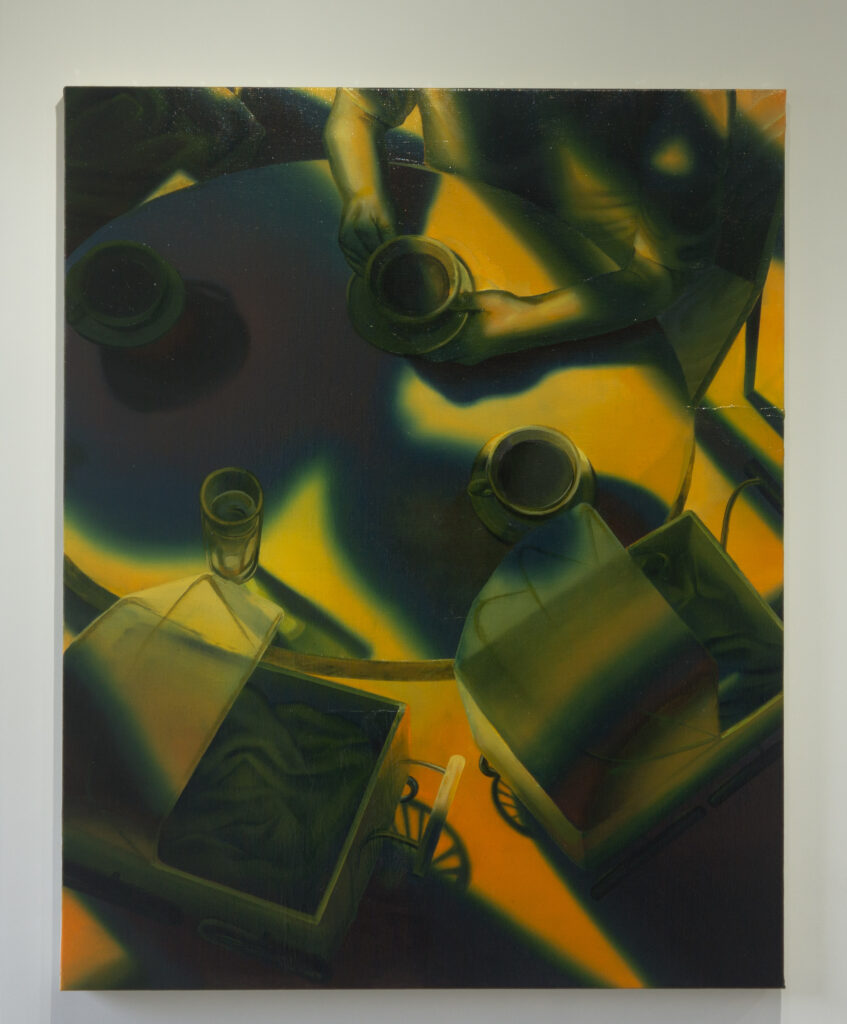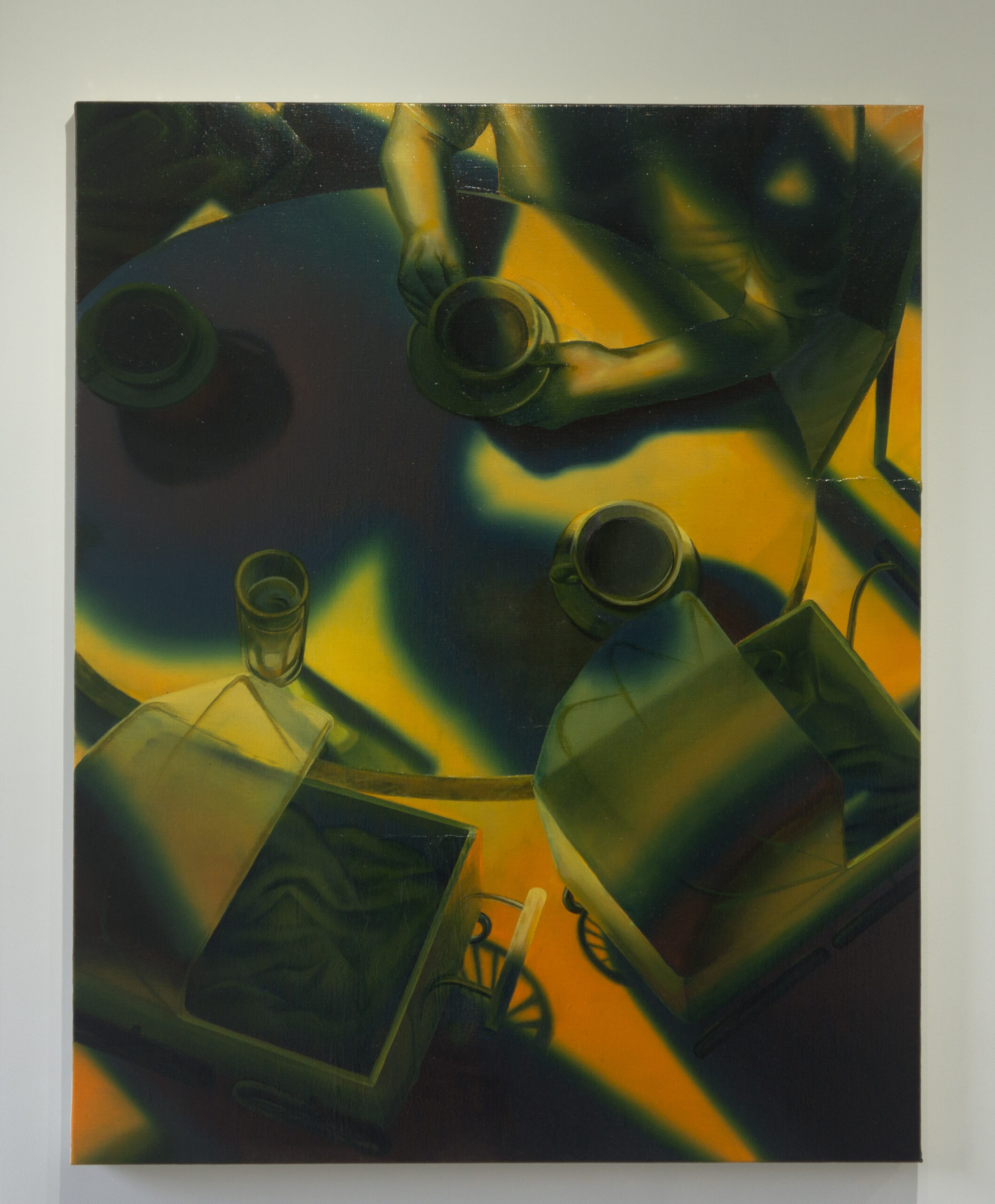I was pleased to introduce Tazaki Ari through aaploit’s group exhibition “Chiasm.” Although I arrived at the concept of chiasm (intersection) quite late in the exhibition planning process, my initial desire to showcase Tazaki’s work came after viewing her piece Endless Circle. I remember first seeing it at some event at Tokyo University of the Arts. When I had the opportunity to learn about the work, I was struck by the multiple layers of conceptual hooks it contained.
Tazaki created new work specifically for “Chiasm.” Among these pieces, reunion is a work where complex mechanisms reveal themselves the more carefully one observes. Considering her current position as a third-year undergraduate at Tokyo University of the Arts, the conceptual refinement and technical achievement demonstrated in this work is truly noteworthy.

Tazaki Ari, reunion, 2025, Oil on canvas, 727 × 909 mm (28 ⅝ × 35 ¾ inches), © 2025 Tazaki Ari
Courtesy of the Artist and aaploit
Reunion is, you could say, an everyday event. It can apply to meeting someone you saw yesterday, or to reuniting with estranged family members after decades apart. Reunion contains within it a time span ranging from days to years. In Tazaki’s work, the subject of this reunion is not directly depicted. Only one figure appears in the composition, and even that person’s face is cut off from view. Instead, multiple empty baby strollers are positioned throughout the scene, with coffee cups and a glass placed in front of each one.
These baby strollers are not merely depictions of everyday objects. They function as metaphors for absent people. Particularly intriguing is the presence of the stroller positioned in the upper left. At first glance, it might appear to be a person, but through the shape of its shadow, it suggests human presence while actually being nothing more than an empty vessel—a stroller. To guide this shift in recognition, Tazaki has placed a more clearly identifiable stroller in the lower portion of the composition, leading the viewer’s understanding in stages.
What becomes crucial here is the creation of a moment when viewers cannot help but become aware of “what they are looking at.” In that instant when recognition shifts—realizing that what seemed to be a person is actually a stroller—we become conscious of the very act of “looking at a painting.” This moment of self-awareness transforms the painting from a mere visual object into something that prompts thought. I think of viewing paintings as an endless journey, with each person following their own path, but I am repeatedly amazed by the meta-structural approach that Tazaki captures.
Tazaki’s technical mastery is evident in her handling of shadows. The coffee cup in the upper left sinks into shadow while somehow projecting a stronger presence than the other cups. This creates the paradoxical phenomenon of “shadows within shadows becoming prominent,” representing an understanding of light that transcends simple contrasts between light and dark.
Tazaki’s current work demonstrates both solid technical foundation and conceptual thinking ability. The use of metaphor, intentional design of the viewing process, and personal visualization of universal experience—these show considerable maturity for a third-year undergraduate. What matters most will be continuing this steady progress. I look forward to seeing how the introspective exploration she currently demonstrates will gradually open up to dialogue with broader contexts over time. By continuing to create work that is grounded and unhurried, Tazaki Ari’s distinctive visual vocabulary as an artist will emerge with clear definition.
Reunion stands as an excellent work—the record of sincere thought by a young painter who carefully explores the boundaries between memory and present, presence and absence.
